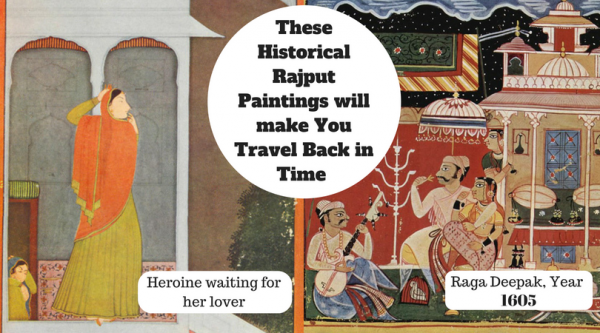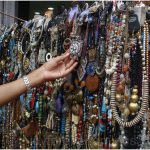Art has been one of the oldest yet a strong form of communication between two entities. It has a tendency to deeply move your soul and the people back then surely knew how to use them to its fullest. As a result, they created some masterpieces, some of which can be found in museums, manuscripts, and books.
Rajasthani paintings which are also known as Rajput paintings strongly communicates with those who are willing to know their culture, architecture, and stories of people back then through art. These paintings evolved and prospered in the Rajputana royal courts. There was a distinct style in every royal kingdom of Rajputana but some common features can be seen in all of them. These paintings depict a number of themes and incidents of epics such as the Ramayana. Although miniature paintings were kept in manuscripts and albums most of these paintings were made on the walls of palaces, inner chambers of the forts, havelis, and hence some of them got destroyed with time.
The colors of the paintings were extracted from some minerals, plant sources, conch shells, and some of them were derived by processing precious stones such as gold and silver. The preparation of these colors took a long time extending to two weeks. Also, the brushes used in the paintings are fine giving them the intricate finish.
In 1597, Rana Pratap Rana Amar Singh established himself on the throne of Mewar. To some extent, he accepted the dominance of Mewar and for the same reason, the impact of Mughal art is visible on Mewar Paintings.
There are three different Rajput painting styles in the region of Mewar. Nathdwara style, Devgarh style, and Shahpura style.

The painting is taken from a Rajasthani school from J.C. French collection. On the back of the painting is inscribed a name ‘Son Singh’ but no king of this name is recorded. However, his features resemble a portrait of Amar Singh of Jailsamer.
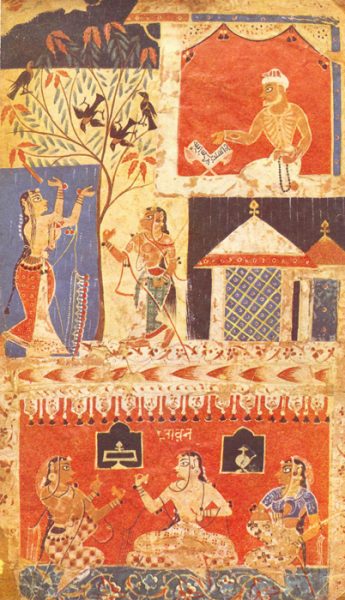
The painting is from year about 1570 and is one of the series of illustrations to poems on the season of the year which is called Baramasa. The joy and relief on the arrival of rains can be seen in the movements of women sitting at the bottom. Rains can be seen in one scene of a hut.
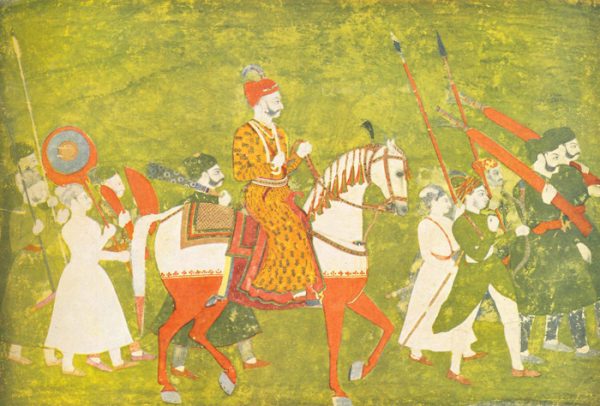
Year of the painting is about 1760. The subject is identified as Bhim Singh of Jodhpur (1793-1803) through labels attached to it. However, it bears no resemblance to portraits of Bhim Singh and the turban he is wearing is not in Jodhpuri style.

About the painting Coomaraswamy has rendered his poem: ‘The heroine at the door of her home, happy in the expectation of her darling’s coming.’

The painting is an illustration to the Hamza-Nama: a huge Islamic manuscript executed for the emperors Humayun and Akbar. The year is about 1570.


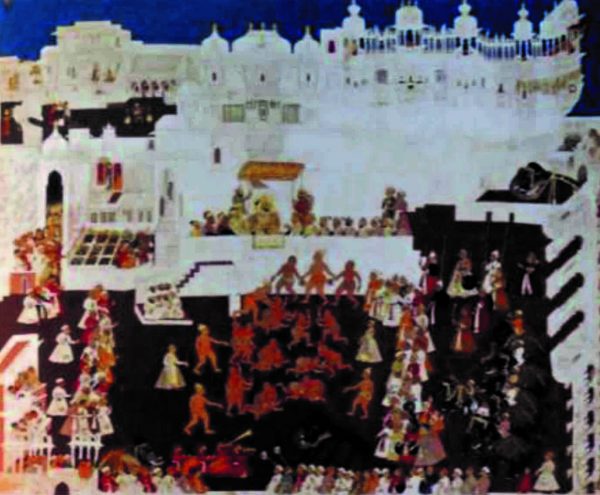





Different forms of Rajasthani Painting
- Frescoes in caves
Fresco is a form of painting which is executed upon freshly laid, or wet lime plaster. These kinds of paintings can be vividly seen in the ancient caves, drawn in temples, palaces, and cenotaphs. The history of wall paintings in Rajasthan is so rich that it will provide you a wide glimpse into the culture of Rajasthan from years ago. The dry desert climate of the region ensures good condition of these paintings.
- Script painting
The tradition of padd and pichwai is very old and is done even today in Rajasthan. Padd and Pichwai are the two forms of script paintings. Padds are based on stories of folk gods while Pichwai is related to Krishna Lila.
- Manuscript painting on Bhurj leaves
In ancient time, the tradition of writing poetry and making drawing on palm leaves was common. As a result, the pictorial text preserved in many Jain collections got abandoned.
- Miniature style of painting
Laguchitra or miniature painting, as the name suggests, is very small in size. One thing that will appall you is the intricate brushwork which contributes to their unique identity. Colors used in miniature painting is derived from natural sources such as vegetables, indigo, precious stones, gold, and silver.
Ragamala paintings
Ragamala which can be translated as ‘Garland of Ragas’ in English is a series of illustrative paintings from medieval India which depicts various musical modes called Ragas. Ragamala paintings were started in most Indian schools in the early 16th and 17th century. There are different subcategories of Ragamala that are Pahari Ragamala, Rajasthan and Rajputi Ragamala, Deccan Ragamala, and Mughal Ragamala.
Every painting in each Raga is personified by a color, mood, and verses describing stories of hero and heroine, day and night are also depicted, and there are a number of paintings that demarcate specific Hindu deities attached with raga, like Bhairava or Bhairavi to Shiva, Sri to Devi etc. These paintings along with Ragas also depicts their wives (raginis), their numerous sons (ragaputra) and daughters (ragakanya).

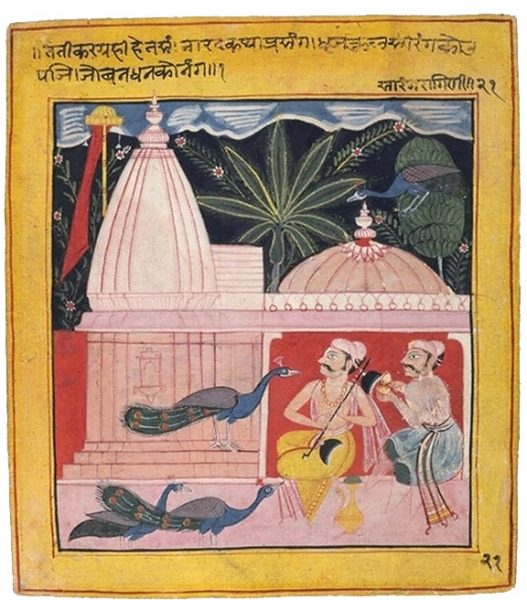
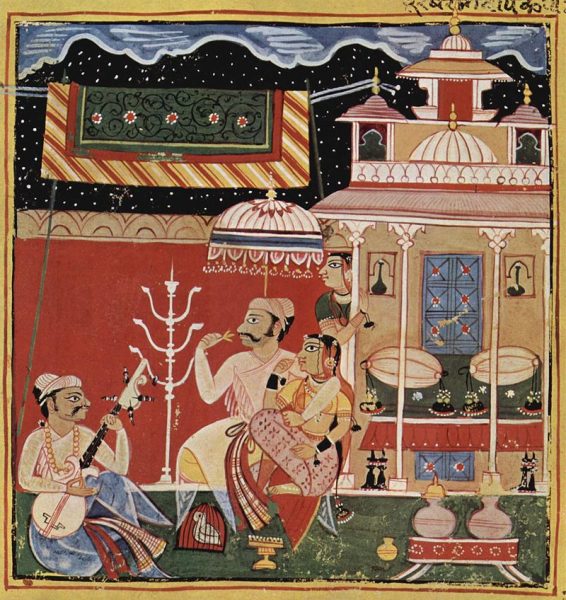
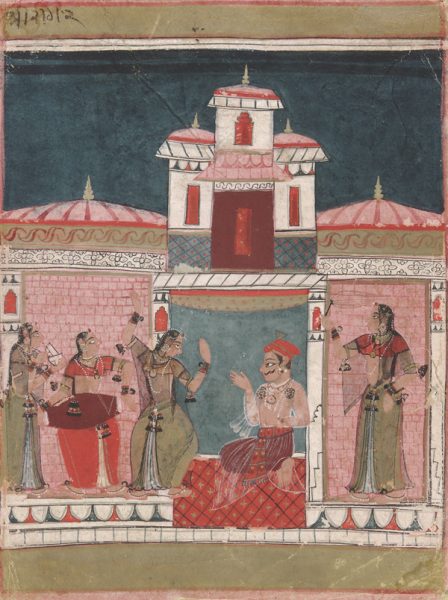
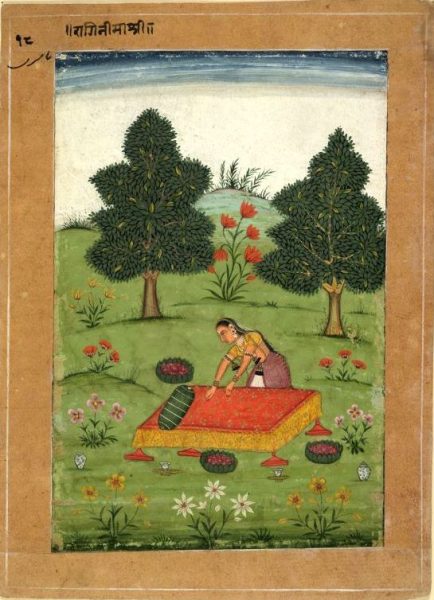
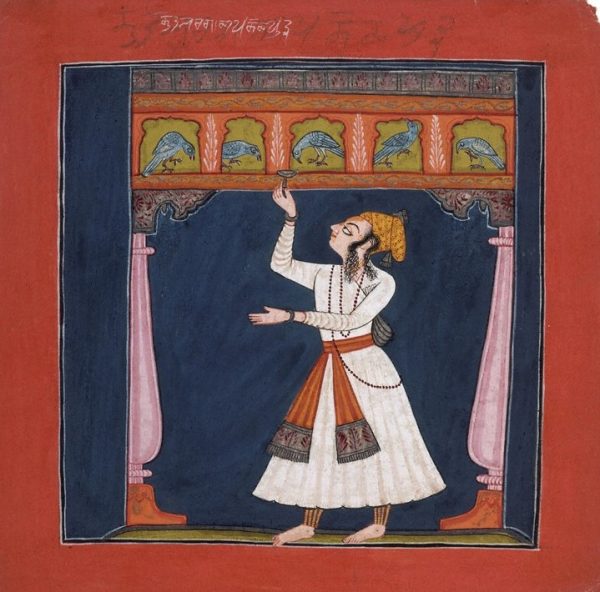
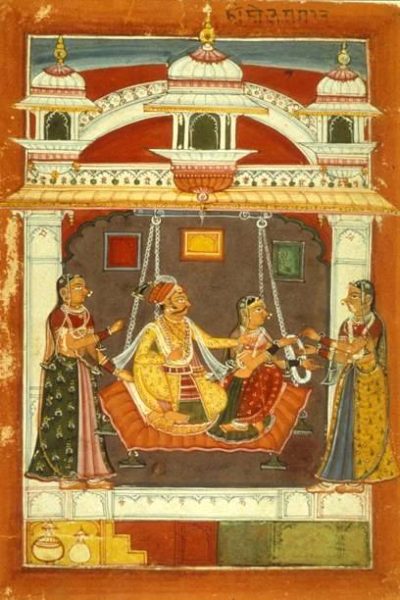
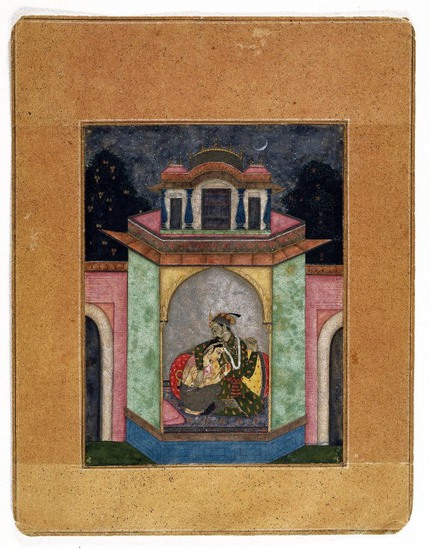
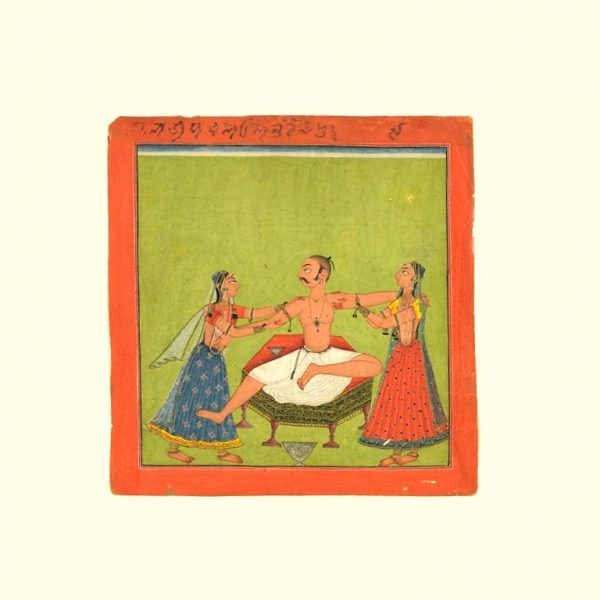
All the paintings would have given you a vivid picture of people and their lifestyle back then. Or if you felt all of these properly, it is possible to time travel through them too. Art is the only form that can make it possible.
Do you own an art gallery and sell such form of paintings there? If so, get in touch with us. We would love to feature your work. Write to me at juhee@udaipurblog.com.
References and paintings from:
Ragamala Paintings Wikipedia
Rajasthan History
Indianart.ru
shodhganga.inflibnet.ac.in
